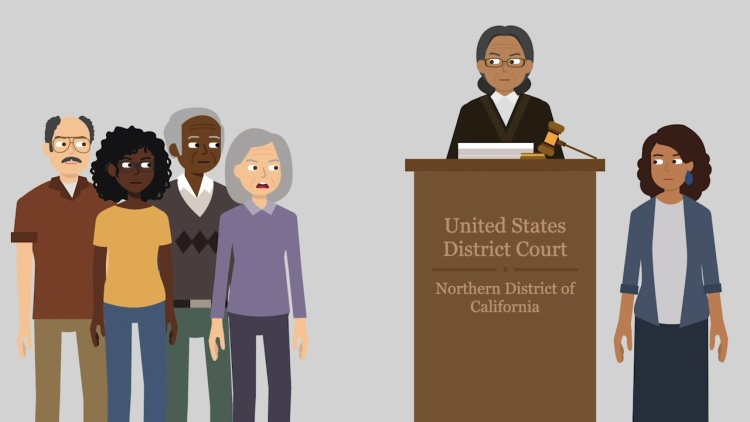Department of Housing and Urban Development v. Rucker
United States Supreme Court
535 U.S. 125 (2002)
- Written by Angela Patrick, JD
Facts
To combat dangerous conditions in public housing, the federal Anti-Drug Abuse Act (ADAA) required that public-housing leases contain a provision allowing eviction if a tenant, a member of the tenant’s household, or a guest engaged in “any drug-related criminal activity” on or off the premises. The Department of Housing and Urban Development (HUD) (defendant), a federal agency, enacted regulations giving local housing authorities discretion to evict a public-housing tenant if a household member or guest engaged in drug-related criminal activity, even if the tenant had no knowledge of it. Pearlie Rucker (plaintiff) rented public housing from the Oakland Housing Authority (OHA). Rucker’s daughter lived with Rucker and was found with drugs a few blocks from Rucker’s apartment. OHA began eviction proceedings against Rucker in California state court. Rucker and other public-housing tenants who were facing eviction for someone else’s drug-related activity (plaintiffs) sued HUD and OHA in federal court. They argued that (1) Congress had not intended to require the eviction of innocent tenants and (2) if the ADAA did that, it was an unconstitutional violation of due process because it took away someone’s lease rights even though the person had done nothing wrong. The district court entered a preliminary injunction preventing OHA from terminating some leases if the tenant did not know or have reason to know about the drug activity. A Ninth Circuit panel vacated the injunction. However, in an en banc decision, the entire Ninth Circuit found that Congress had not intended to evict innocent tenants, reversed the panel’s decision, and affirmed the preliminary injunction. The United States Supreme Court granted certiorari.
Rule of Law
Issue
Holding and Reasoning (Rehnquist, C.J.)
What to do next…
Here's why 899,000 law students have relied on our case briefs:
- Written by law professors and practitioners, not other law students. 47,000 briefs, keyed to 994 casebooks. Top-notch customer support.
- The right amount of information, includes the facts, issues, rule of law, holding and reasoning, and any concurrences and dissents.
- Access in your classes, works on your mobile and tablet. Massive library of related video lessons and high quality multiple-choice questions.
- Easy to use, uniform format for every case brief. Written in plain English, not in legalese. Our briefs summarize and simplify; they don’t just repeat the court’s language.





